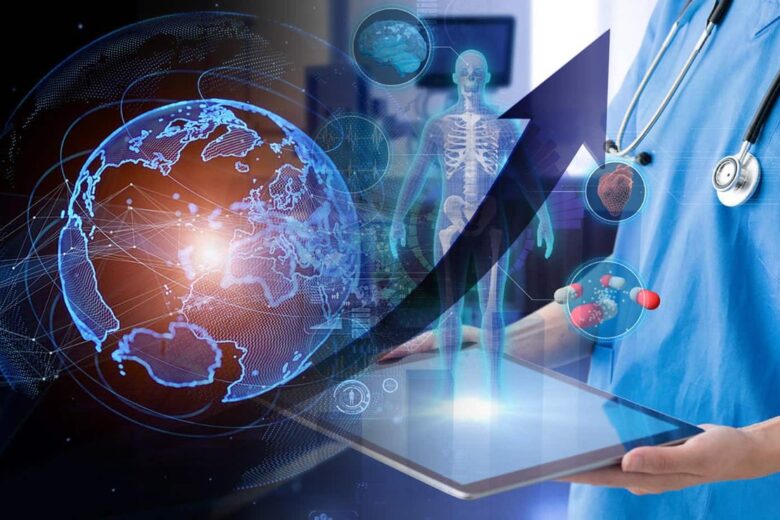Healthcare is undergoing a digital revolution that is fundamentally changing how patients access care and how physicians administer medications. Connected healthcare technologies are revolutionizing how patients receive care, marking a paradigm shift from the traditional approach of receiving treatment only when needed. Patients now have access to a continuous care management system. This transformation leverages connected devices, real-time data sharing, and powerful analytics to streamline care delivery.
Using IoT devices, AI, and cloud platforms, healthcare providers can remotely monitor patients, detect health issues before they become serious, and develop personalized treatment plans. With rising healthcare costs and evolving patient needs, connected health technologies offer compelling solutions that can improve outcomes while simultaneously reducing costs. The COVID-19 pandemic has accelerated the adoption of these technologies and underscores their importance in maintaining healthcare in challenging times.
The Evolution of Connected Health Technologies:
Connected health technologies have become a complete ecosystem that connects patients, healthcare providers, and medical devices through digital networks. This integrated approach enables real-time health monitoring, instant data transfer, and coordinated care across multiple care settings. Wearable sensors, mobile health apps, electronic health records, and cloud-based platforms are all part of this technology, creating a unified care experience. Healthcare institutions worldwide are investing heavily in these solutions to see how they can help address key challenges such as physician shortages, an aging population, and the increasing prevalence of chronic diseases. We expect the market for connected health solutions to grow rapidly as more healthcare systems implement digital transformation initiatives.
Remote Patient Monitoring (RPM):
One of the most important applications of connected health technology is remote patient monitoring, which allows healthcare providers to monitor patients’ vital signs and health data outside of the regular clinical setting. RPM systems utilize various connected devices, such as blood pressure monitors, blood glucose meters, pulse oximeters, and scales, to automatically send patient data to healthcare providers.
This continuous monitoring enables early detection of health problems, reducing emergency room visits and hospitalizations. Healthcare providers can set personalized alerts for specific patient indicators, allowing for prompt treatment if values fall outside the normal range. This technology is particularly effective for monitoring chronic conditions such as diabetes, hypertension, and heart disease, where regular checkups are crucial for optimal patient outcomes.
Telehealth and Online Appointments:
Telehealth platforms are transforming how consumers access healthcare, enabling virtual consultations with medical professionals via secure videoconferencing technology. These systems are compatible with electronic health records (EHRs), allowing physicians to access patient information, review test results, and prescribe medications during virtual consultations. Connected health technologies enhance telehealth by incorporating real-time patient data from monitoring devices, providing physicians with all the necessary health information during a consultation.
Virtual consultations make it easier for people in rural areas, those with limited mobility, and those seeking specialized care from a remote physician to receive the care they need. Artificial intelligence in telehealth platforms enables the use of symptom assessment tools and decision support systems to help patients and physicians determine the best treatment options.
Wearable Health Devices:
Wearable health devices have become increasingly sophisticated over time and now do much more than just track your health. They can monitor your health at all times. Today, wearables can track data such as heart rate variability, sleep patterns, stress levels, and blood oxygen saturation, and even detect abnormal heart rhythms that can indicate serious heart problems. These devices integrate seamlessly with smartphone apps and cloud-based systems, allowing people to share their health data with their doctors in real time.
Advanced features include fall detection, medication reminders, and emergency alert systems that can immediately notify medical staff or family members when something unusual occurs. Data collected by wearables can provide healthcare providers with useful information about changes in patient behavior and health status that they cannot obtain through routine clinical visits.
AI and Machine Learning in Connected Health:
Artificial intelligence and machine learning are transforming connected health, enabling predictive analytics, automated diagnostic support, and personalized treatment recommendations. These technologies analyze vast amounts of patient data from connected devices to identify patterns and predict the risk of serious health conditions before they arise. Machine learning algorithms can analyze continuous streams of patient data from multiple sources and detect subtle changes that could indicate worsening health conditions.
AI technologies help healthcare providers make more accurate diagnoses by analyzing patients’ symptoms, medical history, and real-time monitoring data. AI can be used in connected health platforms to provide automated alerts, stratify patients by risk, and support physicians in decision-making. All these factors enhance the quality and efficiency of patient care.
Benefits of Connected Health:
Numerous benefits of connected health technology can revolutionize patient care and speed of delivery. Patients want easier access to care, fewer scheduled doctor visits, and greater engagement in managing their health. Healthcare professionals benefit from easier access to patient data, more efficient care coordination, and the ability to manage larger patient populations more effectively.
This technology enables proactive treatment management and prevents costly emergency interventions and hospitalizations by identifying and addressing problems early. Connected care systems also make it easier for patients and providers to communicate, leading to better treatment interactions and higher medication adherence. Healthcare systems can save costs through fewer readmissions, fewer emergency department visits, and better resource utilization.
Issues and Considerations:
Connected health technology has the potential to transform the way we work, but many challenges remain before it can be widely adopted. Because healthcare organizations process sensitive patient data across numerous connected devices and platforms, the privacy and security of this data remain paramount. Interoperability issues between different care systems and devices can limit the usability of connected health solutions and create data silos.
Healthcare providers need training and support to better utilize new technologies and integrate them into current clinical workflows. Getting patients to use digital tools can be challenging, especially for older adults who may be less accustomed to them. Regulatory compliance requirements further complicate connected health solutions. We must carefully adhere to healthcare privacy laws and medical device regulations.
Conclusion:
Connected health technology represents a crucial shift toward more personalized, proactive, and accessible care. As these technologies evolve, patients can expect increasingly sophisticated monitoring tools, health predictions, and seamless care coordination. The convergence of new technologies, such as 5G connectivity, advanced sensors, and quantum computing, will further strengthen the connected health system. Healthcare organizations that leverage these technologies can better respond to changing patient needs while simultaneously addressing critical healthcare challenges, such as provider shortages and rising costs.
The future of healthcare depends on the successful implementation of connected technologies that help patients and clinicians achieve better health outcomes. As their use increases, connected health technologies will become an essential part of modern healthcare delivery. It will transform the way we manage our health and access care.
FAQs:
1. What is connected health technology?
Connected health technology is a network of medical devices, applications, and platforms that transmits patient health information in real time between patients, healthcare providers, and healthcare systems via the internet.
2. How does remote patient monitoring work?
Remote patient monitoring uses connected medical devices to automatically collect and transmit a patient’s health data to their healthcare provider. This allows healthcare providers to monitor a patient’s vital signs and health indicators at any time, even when the patient is not in the hospital or clinic.
3. Are connected medical devices safe to use?
To protect patient data, modern connected medical devices employ various security measures, such as encryption, secure authentication, and compliance with healthcare privacy laws like the Health Insurance Portability and Accountability Act (HIPAA).
4. Which conditions benefit most from connected health?
Connected health technology is particularly beneficial for people with chronic conditions like diabetes, hypertension, heart disease, and respiratory diseases, as it allows them to be monitored at all times and receive immediate care.
5. How much does connected health technology cost?
Costs vary depending on the technology and services required, but many connected healthcare solutions are proven to save money by reducing hospitalizations and emergency room visits and making care more efficient.




